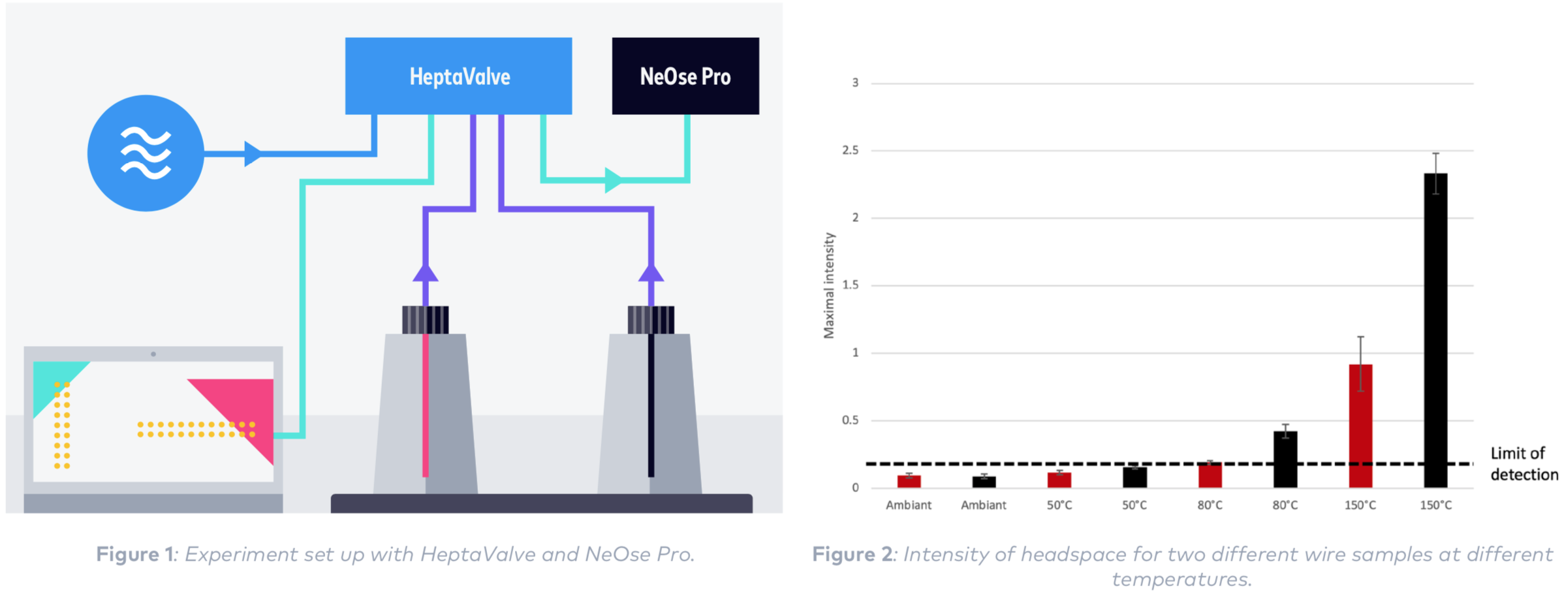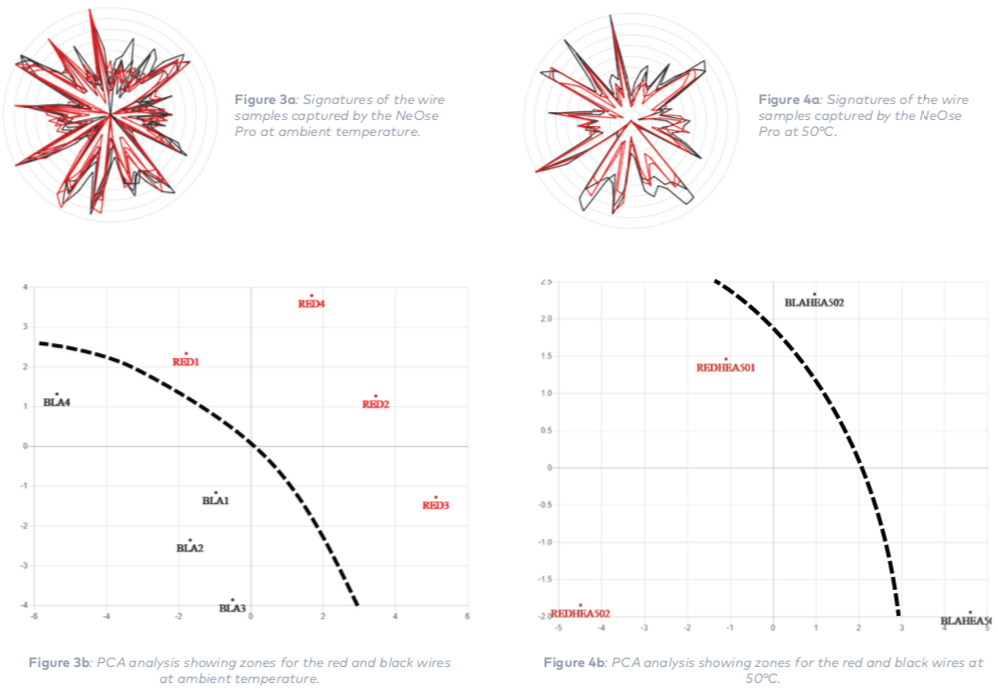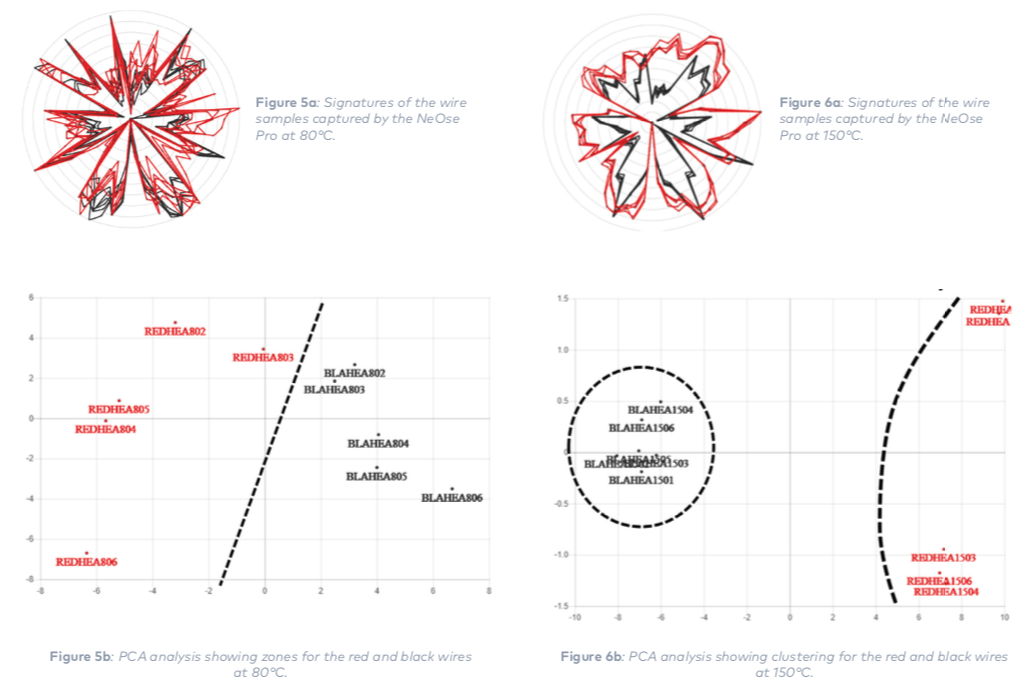Today, sensor networks in everything from cars to industrial manufacturing are used to ensure that the full mechanical and electrical systems are operating as intended. In industrial environments, these systems allow operators to monitor and control industrial processes to keep the full system up and running at ideal efficiency. In the case of automotive systems, the system ensures car performance and safety—sending driver alerts when a malfunction is detected.
In these scenarios, a heating wire can be the precursor to something as benign as a short circuit to something more catastrophic like the overheating of an entire system or assembly. Although temperature sensors can often be used to detect extreme temperatures, being able to sense the distinct odor of a heating wire casing could enable more preventative alerts before a catastrophic failure occurs.
Challenge
As manufacturing systems, vehicles and consumer end products rely on complex electronics systems, controls that not only regulate performance but ensure user and operator safety becomes a key focus. The challenge becomes how to integrate new sensors into an already full system—and ones that can provide meaningful, actionable data.
All drivers at one time or another have experienced the early warning of a smelly component or module as it warms up before it breaks. Or the very characteristic smell of an ageing brake or clutch. Many industrial operators can distinguish the smell of different components heating beyond their spec—whether it be mechanical or electrical.
Of all the existing sensors in these systems, this key parameter continues to be absent—odor sensors. Until now, e-noses have been too bulky and expensive to integrate into such an assembly. In addition, the data captured is meant for a more robust analysis—typically providing chemical intensities and breakdowns for further research. Until now, these solutions did not fit the need for a simple, compact odor diagnostic tool.
Solution
Digital olfaction offers a better way. Digital olfaction combines biosensors, advanced optics and machine learning to mimic the human sense of smell. Digital olfaction solutions allow for simple odor detection and analysis to enable early warnings and alerts of potential malfunction.
To illustrate this, Aryballe two common types of wire found in these systems—18 AWG solid copper core with PVC coating and 6 AWG stranded wire with rubber insultation—to determine the ability of their NeOse Pro to classify the results.
The experiments were performed with a NeOse Pro equipped with a Heptavalve to ensure repeatability and consistency of samples. Between two to six replicates were taken for each sample placed in 60 ml bottles, waiting two minutes between two measurements. Before measuring samples, a minimum of five minutes of waiting time was allowed to ensure complete formation of the headspace in the vial.
The experiment measurements were taken at four temperatures: ambient, 50°C, 80°C, and 150°C.

The results of the test showed that after the five-minute waiting time, the intensity of the headspace was slightly below limit of detection for the NeOse Pro for both wires at both the ambient temperature and 50°C. Subsequent heating to 80 and 150°C provided an intensity above the NeOse Pro detection limit.
At ambient temperature, the device saw some variance in the olfactory signature replicates across samples of the same wire type (Figure 3a)— although the clustering results show two distinct zones for the wire samples (Figure 3b). Heating the samples to 50°C saw a similar variance and zone clustering, without significant improvement in the discrimination (Figure 4a and 4b).

As the environment continues to heat up, mimicking a heating component that begins to melt a casing, the results become more definitive. At a temperature of 80°C, there is still some variance in the olfactive signatures for the red wire, but the signatures of the black wire start to become more uniform (Figure 5a). Since the intensity of the wire at 80°C is over the NeOse detection limit, we start to see two zones with significant distinction in the clustering results (Figure 5b).
Finally, when the temperature was increased to 150°C, we see reproducible olfactory signatures across all replicates for both the red and black wires (Figure 6a) with a significant distinction in the mean olfactory signatures across the products (Figure 6b).

Conclusion
The results of the tests showed that Aryballe’s digital olfaction technology can distinguish between wire types at high temperatures—those thought to signify component overheating or system failures. Additional studies between temperatures from 80 to 150°C could be performed to determine the exact temperature where a consistent discrimination can first be seen.

